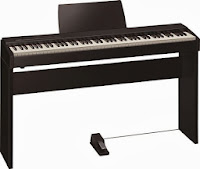 |
| F20 with optional stand |
UPDATED REVIEW – June 2, 2017 – Roland F20 – Not Recommended – The F20 piano is now discontinued –
Prior F20 review – The Roland company of Japan has made some great music products over the years including synthesizers, digital pianos, guitar products, computer music products, digital drums, digital accordions, and lots more. They are well known for their keyboard instruments and professionals from all over the world own and play them. Roland also has a line of home style digital pianos which start at about $1299 and go up from there. The F20 portable digital piano ($799US internet price – furniture stand optional at $119) is (was) Roland’s lowest price 88-key weighted action digital piano and comes in an attractive satin black finish for the US market. I am a big fan of many of Roland’s pro products and higher priced digital pianos so I assumed this lower priced model would be equally as good. Further Roland UPDATE: Roland has a new lower priced portable digital piano called the FP30 at just $699US internet discount price. I do recommend this newer model so please go to my review of it to learn more: Roland FP30 Review
Essentially, the new F20 is really a portable version of their higher priced (now discontinued) RP301R/F120R digital cabinet pianos with less features. The F20 has a basic minimalistic control panel situated on top of the piano above the left hand keys and and sound selection is done by holding a sound
category button down and pressing the appropriate key on the left hand
portion of the keyboard (the owners manual has the sound chart for this). The F20 operating system is similar to Kawai &
Yamaha portable pianos in this way and is fairly easy to use although you need to look in the manual for the function chart to know what keys to push to activate other sounds and functions. The F20
uses the same piano sound technology as their RP & F120 models which
they call the SuperNATURAL piano sound utilizing 128-note polyphony along with this model having a total of 35 nice sounding instrument tones including electric pianos, organs, guitars, strings, synths, bells, etc, 32 fairly authentic drum rhythms & auto chord styles (nice for rhythm & timing training and playalong), and has most of the connectivity functions of RP301 including USB output to iPad/computer as well as USB flash drive input to record and save songs as well as play multi-track MIDI song files (I talk about this further down in this review).
The F20 is suppose to be a portable piano and as far as it’s overall size and configuration goes, it is portable and it can be used on an option Roland furniture style stand or a keyboard x-style stand. However, the weight of this piano without a music rack (which is included) is slightly over 44lbs which makes it pretty heavy for a lower priced portable piano as compared to the other top brands including Casio, Yamaha, and Kawai in this price range, with the exception of the Yamaha DGX650 ($799 internet price) which is bigger and heavier. In fact the FP20 is between 10-20 lbs heavier and 5″ deeper (nearly 16.5″ deep) than the lighter weight competitive models, so if you plan to move this piano often, then there are better options as far as weight and size is concerned. However if the piano will remain stationary in your home, then the extra size and weight will likely not be an issue.
| Ivory Feel-G textured keys |
The most important considerations in any digital piano should be key action, piano sound, and pedaling and when it comes to the new F20, that’s where this piano falls quite short in my opinion. Roland is using its (older) Ivory Feel-G keyboard action which is not available in their newer models except for a couple of the Roland portable stage pianos including the RD300NX. I have talked about this Ivory Feel-G keyboard before in other reviews, and overall I don’t like it as compared to the key actions of the other 3 top brands in the under $2000 price range including Kawai, Yamaha, and Casio or as compared to the newer Roland F130R ($1299 internet price) with a very nice upgraded key action. Kawai offers 3 different key actions in this price range, Yamaha offers 2 different key actions, and Casio offers one and they offer more playing realism in terms of the key weight, static touch weight, movement, and feel. This ivory feel-G key action is supposed to be
heavier in key weight like a piano, and it is heavier and Roland
did improve that part from previous models. However, the key movement is quite sluggish when playing softly or lightly, especially compared to
other digital piano brands in the same price range and also compared to
regular acoustic pianos. The sluggishness is evident to me and feels unnatural and I am not impressed at all. The upgraded higher priced Roland key actions (Ivory Feel-S, PHAIV)
in the higher priced Roland models as well as the the portable FP80
move noticeably better and I do recommend those models for key action, The synthetic ivory material on the white keytops of Ivory Feel-G keys does give the keys a textured ivory look and that part is nice although that particular texture on this action does tend to get dirty looking from dirt and oils in the fingers (I have seen this myself), but it can be cleaned. I have not seen this happen on other synthetic ivory surface key actions.
 |
| Acoustic Grand escapement diagram |
Roland
also claims to have added an “escapement” feature in the Ivory Feel-G key action
which they also have in their better key actions. This key action mechanism is supposed to
duplicate more closely the touch of a grand piano as opposed to an
upright piano. Unfortunately, this “escapement” feature is virtually non
existent in the G-Keyboard as opposed to the escapement feature in the
Roland S and PHAIV series of key actions found in the majority of Roland pianos
including their HP series. You just cannot feel the escapement feature in the new F20 (at least I could not
and I know what it should be doing), no matter how hard or
softly you press the keys. Roland might as well as have not mentioned
this feature on their specs because it just doesn’t work based on my playing
experience with this action. This is not the case with the better Roland key
actions as you can definitely feel this feature on those pianos and it’s
quite realistic.
| acoustic piano keybed and felts |
Finally,
with regard to key actions, Roland has also had a noticeable
problem with their Ivory Feel-G key actions making a very loud thunking/thumping
sound when the
keys are played with a bit of force. Some previous Roland
digital pianos in past years at about $2500 had this issue and I have
played many of them and they all did the same
thing with having a loud knocking sound when the keys were going down and hit the bottom.
Unfortunately it is no different in this new model F20. The
loud thunking noise when playing the keys sounds like there
isn’t enough felt under the keys to prevent the keys from knocking on
the keybed underneath the keys. The picture above left shows a regular acoustic piano with special felt under each key to prevent excessive key noise when the keys hit bottom. It would be a similar concept in a digital piano where some sort of felt or special dampening material needs to be used to allow the keys to play without hitting the bottom keybed or metal frame (in digital pianos). I don’t know what causes the excessive noise exactly, but
when you especially play at lower volumes or use headphones for private
practice, the thumping/knocking noise
from the keys can be quite disturbing and distracting and I
have had owners of Roland pianos with this key action tell me this before.
However, if you play the keys very lightly or softly you really don’t hear the knocking noise, which is good. But
that’s not the way most people play because it’s necessary to
use dynamics &
different expression and therefore you will eventually run into this
situation,
especially if you’re a student or if
you’re somewhat more advanced in your playing skill level and use more force in playing the keys a bit harder with more dynamic expression
(like I do).
With regard to the SuperNATURAL piano sound which Roland claims is a superior reproduction of an acoustic piano, I do think the piano dynamic range, key volume expression and pedal sustain decay time is very good and as good if not better than Yamaha in this price range. However, the sound
system in this model (the speakers are in back of the piano) seems to make the piano sound thin and tinny when you
play the middle to upper part of the keyboard and this would also include listening through headphones. The
lower
bassier piano sounds are fuller and more resonate, but as you get up
to the middle and upper octaves, that’s where the piano starts sounding
somewhat electronic and thin. You can control the brightness and reverb effects on the piano which helps a little and a first time player/student or someone who doesn’t
know
what pianos are supposed to sound like may not notice this unnatural piano sound right away when playing in middle and upper octaves, and so
it may not be an issue for some people. But this is an issue for me and that’s why
I am pointing it out and the other brands are much better as far as the sound in the middle to upper key octaves. It is worth pointing out that the SuperNATURAL piano sound on the higher priced models of the HP and DP series Roland pianos sound much better and more natural, as it should be, and there is no problem there. Roland definitely needs to redesign their speaker system on this piano because for $795 it’s not comparable to other brands and models in or around this price range. Copyright AZPianoNews.com 2014
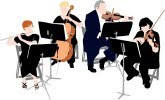 The F20 has a bunch of very cool features such as 32 interactive style accompaniments (backing
The F20 has a bunch of very cool features such as 32 interactive style accompaniments (backing
tracks) so that you can “play with the
band.” This feature allows you to play regular pop, jazz, classical,
country, big band, and other styles of music on the piano and then a
background group of instruments (including a drummer) will follow your
playing and recognize your chords and notes (chord recognition
technology) and play appropriate backgrounds just like a band or
orchestra would do. It doesn’t wait for you like the teaching system on
some Yamaha digital pianos but instead fills in some great multi
instrumental music behind you piano playing. This is a fun feature for
people who cannot play or don’t really want to learn to play in a traditional way such as for adults not wanting to take
lessons. The quality of these background arrangements are very good which
is a Roland specialty, and I like them very much. The F20 also plays the drum rhythms separately so you can just play along with drum rhythms to learn your timing & rhythm better and that’s a good thing. But with regard to the interactive chord accompaniment feature that Roland includes in this model, based on my
long experience as a piano teacher and musician, most piano students don’t use it much, if at all, and most teachers are not able or willing to teach this chord method of play. However, this interactive feature is something you could learn to use on your own but you
need to have good rhythm and timing for it to sound good and understand
the concept of playing that way (with standard left hand chords). It really is a fun way to make music that you would probably otherwise not do, but it’s also a feature you
and/or your family may not use much.
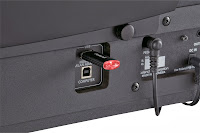 Other useful features on the F20 is a 1-track recorder for recording and learning along with being able to save your
Other useful features on the F20 is a 1-track recorder for recording and learning along with being able to save your
recorded songs direct to a USB flash drive (left pic), a headphone out put in back of the piano (I would have preferred that jack to be in front), a keyboard
adjustable split function for playing style accompaniments or splitting
the keyboard for two different sounds, the ability to layer two sounds
together for the two different tone buttons with adjustable relative volume, three key sensitivity adjustments to change velocity curve (how loud the initial sound is when you first press a key), a USB
flashdrive input for playing General MIDI songs or even audio WAV file
songs for play along and learning with your favorite tune. You can
slightly speed up or slow down the audio WAV file song while learning to
play it which is useful and a very cool feature. See my blog article for
more info on General MIDI here: General MIDI educational features and why they work
The F20 also has a direct USB to computer output (above left pic)
for connection to a laptop or iPad for even more fun with your piano which is a nice feature to have! Another unique feature of the Roland F20 piano in this price range is that it can
wirelessly connect to an iPad using an optional Roland wireless USB
adapter. Without a wireless
connection you would be using a special cable/iPad connection adapter & cable which
is how it would connect for other digital piano brands. The wireless
feature is a very unusual to have in this lower price range under $1000 (assuming you have wireless in your home) and
can help reduce clutter. Roland also has some very cool iPad apps for song playback from iTunes, piano education, and navigating Roland control panel buttons much easier and more intuitively that they have specially created for their Roland pianos which are exclusive to the Roland brand.
My final conclusions are…if it were not for the poor keyboard action movement & key knocking noise along with
having the thinner sounding piano tone in the middle to upper octaves on
the main piano sound, and the unavailability of a optional 3-pedal unit, the Roland F20 piano would have been a very good competitor to the other brands in this price range. If you personally like the
Roland F20 piano, assuming you get a chance to try it out, and the deficiencies I have
mentioned here do not bother you, then you should buy it because
at the end of the day…it’s your money and there are
many things to like about this piano:). As far as optional pedals for this piano, as I just mentioned, Roland does not offer a triple pedalboard system for this model, so you cannot set it up like a traditional piano as you can on the Yamaha, Kawai, and Casio pianos in this price range. The single piano style sustain pedal that comes with this model may be sufficient for some people (and does do the job of sustaining) but it would have been helpful if Roland had also produced a 3 pedal unit that you could buy for an additional price. Roland is a great
company and has been for many years but I just wish they done a better on
the F20. My guess is that they will probably replace it sometime next year because the F20 has been out for awhile and it’s time for an upgrade. Roland builds reliable products that have a big following and I do like many of the products they produce including their higher priced home furniture cabinet digital pianos as I mentioned earlier.
The bottom line is that it’s all about playing music and enjoying the experience because it can add years to your life, make you feel good, instill discipline and lifelong abilities in your children, and it’s something that’s good for the entire family. When shopping for a new portable digital piano you should also consider
the other options in this price range by Yamaha, Casio, and Kawai who
build
competitive models which, in my opinion, offer you more “bang for the buck” as
far as a satisfying piano playing experience in this price range and this would include the Yamaha P115, Casio CGP700, and Kawai ES110 under $1000. But as I said earlier, if you think the Roland F20 seems like the best option for you, then buy it. Go to the following links to read my reviews on these other portable models:
Casio CGP700 Review
Kawai ES110 Review
| Casio PX860 |
Oh..and one more thing…if what you really need is just the best piano playing experience you can get in a new digital piano furniture style cabinet without so many digital “bells & whistles” for around $1000 or a bit more, then I would recommend you consider the Kawai KDP90, Casio PX860, or Roland F140R. If you don’t require a lighter weight portable model, then you’ll get more for the money in terms of realistic key action, sound, & pedaling and they also have some useful built-in educational features too. Many people already own these models and really enjoy them for that more organic acoustic piano playing experience in a reasonable price range. Check out the links to my reviews on these models so you can do your research and make a good buying decision,
– Roland F140R Review
– Casio PX860 Review
– Kawai KDP90 review
If you want more info on new digital pianos and LOWER PRICES than internet, Amazon, and store discounts, please email me at tim@azpianowholesale.com or call direct at 602-571-1864.
* I recommend eMedia educational software. If you decide to make a purchase after clicking on link below, I have arranged a big discount for you direct with eMedia for their educational software and that discount price is displayed through this link only! I want to see everyone learn to play and enjoy piano!




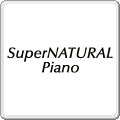

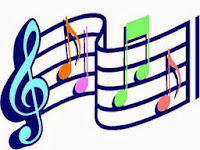











I have the F20, and I disagree with a lot of the things you said. The escapement feature is definitely there, it's beyond me how you don't feel it. The 'loud thumping noise' is in reality, in my opinion normal noise. I am not expecting a noiseless keyboard and it makes no more noise than in the hammer action keyboards I have had in the past such as the Korg Triton 88. The way you write about it, makes it seems as if the keybed on the F20 is a cheap noisy thing, which is absolutely not true. You seem to say that the keybed on the Casio in a comparable price range (like the PX350 ? ) is better. I tried the PX350 and I think the F20's keybed is at a completely another level. The one on the Casio is not bad but on the F20 i definitely feel the quality. Also, I personally really like the Supernatural sound, it offers excellent playability from p to fff. I own sampling libraries from Imperfect Samples and East West and although the samples sound great, playability for me has always been an issue as most master keyboards just can't pull off the dynamics. The F20 solved all these problems and since I have had it, I find myself practicing a lot more and being completely focused on the music. The reason for this is the F20 playability and dynamics. With the sampling libraries etc, I had to make an effort to practice well 2 hours a day, since the F20 came into my life, I find myself practicing for 4 hours a day and being completely immersed in what I am doing. One of the thing I hated about the sampling library/ master keyboard setup is that it was really hard to get ff and pretty much impossible to get fff. With the F20 all this is achievable in a natural way. Also, the keyboard it's built into what looks to me like real mahogany, which is pretty impressive at this price point. I don't really use the other features except the recorder and the usb key feature. I have to say that at first I didn't like the ivory tops, I preferred the clear plastic that's more common, but I got used to that. After 5 days of practicing on the F20, going back to my old master keyboard, an hammer-action Fatar, seemed like definitely going many steps back. From my point of view, the F20 is an absolute winner, and the best instrument I bought in the last 8 years, but that's my opinion.
at the end of the day, sound and touch is subjective. I am happy you are enjoying the F20 because that's all that really matters. There are some things to really like about the F20 but the key action and sound in my opinion are not up to the standards of other Roland products and I still stand by the comments I made for this particular model. Happy music playing to you
Hi, Thank for your review.
I actually got the F20 few month ago when your review was not in yet. I hesitated between this one and the Kawai ES100. I have got a Kawai upright piano and really liked the sound of the ES100. Nevertheless I went for the F20 as I found that the ES100 was more a piano to play the piano sound rather than other sounds. For this I think the F20 is better. I agree with you on the electronic and thin sound of the middle and upper octave and the average quality of the speakers. I do play a lot with headphones so the sound is much better with good headphones. I agree the plugg for the headphones should have been at the front !!.
I have also connected it to other speakers which make it sounds much better.
I actually like the key action and found that the ES100 had a more plastic feel. I haven't noticed the knocking sound of the keys or at least it hasn't bothered me. In fact I agree with the previous comments on the fact that to me the PX350 key action felt much worse than both the ES100 and F20.
I have used the recoding function with the USB which is really neat.
I don't really like the way of selecting sounds with the piano key but getting used to it. Ideally it would be good to have a small digital screen but at that price most brand don't do it. Which I am still puzzled as to why? It shouldn't be that pricey to add.
But overall pretty happy with this buy, I was also looking at much more expensive digital piano and I don't regret getting this one. It really complete my Kawai upright acoustic piano
Overall, Plus :Good key action, good sounds, some cool features, nice furniture finish
Minus: Speakers, sound selection system.
I am not professional player but I would rate ES100 and F20 as the best buy in this category. The ES100 for more piano focus, the F20 to have fun with other sounds, rhythm and record easily.
Great review. I really like the extra sounds on this piano, as I wish to record and compose some music in the future. However, as a classically trained pianist, would you recommend yamaha p105 over this in terms of piano sound, touch and feel?
I also intend to use this in a church through a pa system….
Thank you.
From what I've read on Amazon reviews, the Yamaha P-105 is pretty meh. It's in the lower quality bracket–you get what you pay for. I wouldn't mind getting it for someone who is starting to get into making music and getting used to it all, because it's still decent, but it may deserve an upgrade in the future. The Yamaha P-155 is a pretty good choice for less than 1000, something that will last you, but I think it's discontinued now.
Personally, I'm looking at a higher quality Yamaha or a Roland for myself.
cutting to the chase..try the p115…I usually dont like this price range (5-600) but much better than p105..other onboard sounds just ok..i have a prob with Roland Super Natch being too uneven and some of the resonance is annoying to me (Im a rock and Jazz player who grew up Steinway..a tad darker sound generally)..ok if you like quirky..and I had several Rolands and Kurzs..to me best bang / buck is Yamy P115
Hi, great review. I see that the F-20 has just been superseded by the FP-30, and I wondered if you had any plans to review the FP-30 at some stage?
yes, I have played and will be reviewing this new Roland model within the next few weeks.
Fantastic, I will wait on the review before making a decision. For info complete beginner here, looking to purchase first piano to learn on.
I am learning to play the piano as a hobby and bought the F20 last year,after some searching and comparison.
I have limited exposure to acoustic uprights and grand so could not really notice the deeper technical stuffs.
The thing that pulled me towards the F20 was the key touch. Comparing to other digital piano at this price point, and a few even higher ones, the touch and feel to me was much better. The keys felt more realistic than some I tried on. While playing the F20, the keys does not feel plasticky or toy-like. I tried using my thumb nail to swipe up and down on the keys, it was much smoother compared to others.
I also felt when the keys hitting the bottom, the thumping sound is more acceptable and quieter than others. I have tried on a $3,000 digital piano with the volume down low, the thumping sound from the keys hitting the bottom was way more prominent, playing with or without a headphone on, after a while the thumping sound would be sort of a distraction.
Another draw for me is the F20 has a wooden case/shell, nowadays most of the lower price digital piano has plastic casing.
What I agreed with you is on the F20, it does has an unnatural sound for it Supernatural sound. I have toggle among the 3 available piano sounds selection and settings, overall the playing experience is still enjoyable.
Cheers.